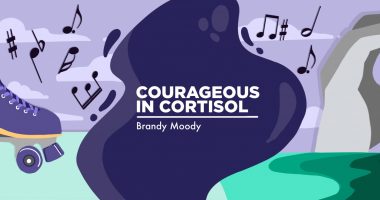Embracing negative emotions has been positive for me
I'm no longer hiding the emotional effects of Cushing's

Because of my Cushing’s disease diagnosis, I’ve often felt like a burden to my friends. Hangouts became long sessions of talking about my illness. My responses to “how are you?” went from “good” to “bad,” and eventually, I was no longer able to attend any events or gatherings.
The biggest issue was that when I initially became sick, I had tantrums. My emotions were all over the place, and I couldn’t control them. High cortisol levels affected my mental and emotional health, and because I was untreated at that point, there was nothing I could do but ride the waves. I cried over clothes. I had outbursts over unwatered plants. Negative emotions were overriding me, controlling me, and I felt like I had a constant weight on my heart.
Once my health began improving thanks to treatment, I wanted to make up for how difficult I’d been when I was sick. I wanted to be kind and easygoing. I didn’t want to have any more tantrums or outbursts. I felt I had to be a calm, relaxed person. Unfortunately, these desires backfired.
Whenever my cortisol level would rise and result in anger, I’d hide out in my bathroom. Whenever I wanted to cry because I was overwhelmed, I would excuse myself and cry outside. I wouldn’t let anyone see me as weak, angry, or sad.
Embracing the negativity
It should come as no surprise that pushing my negative emotions down by hiding and suppressing them didn’t work. In fact, those emotions began to overwhelm me. I’d hide how depressed I felt until the door closed and I was alone, and then it would consume me. I’d cover myself with my weighted blanket and refuse to move.
Through talk therapy, I’ve been working on embracing the negativity, and finally, that weight is lifting off my heart. I let myself cry in front of my partner. I allow myself to be angry around my friends. I tell people when I feel anxious, jealous, lonely. These emotions have started to feel less like a wall and more like a part of me.
The Disney movie “Inside Out” does an incredible job of showcasing the importance of embracing both positive and negative emotions. The movie follows a young girl whose joy is struggling to share space with her sadness. That’s exactly what I was doing — trying to push my sadness down to make room for joy. The truth is, you can’t have joy without sadness, and that’s OK!
Embracing my difficult emotions has helped me enjoy the good ones more. I forgive my past self for my outbursts. I mean, I was dealing with a pituitary tumor and major hormonal issues, for God’s sake! I wasn’t perfect, but who could be, dealing with something like that? I have to be kinder to myself, instead of fearing that I’ll become that version of myself again.
Negative emotions are part of life, especially when you’re chronically ill. Cushing’s disease is a lot to handle, and it would be asinine to expect to be happy all the time while dealing with it. For me, embracing these emotions was freeing, and forgiving myself for my reactions to the worst thing I’ve ever experienced has been life-changing.
I hope you’re embracing your negative emotions, too! You can also follow my journey on TikTok and YouTube.
Note: Cushing’s Disease News is strictly a news and information website about the disease. It does not provide medical advice, diagnosis, or treatment. This content is not intended to be a substitute for professional medical advice, diagnosis, or treatment. Always seek the advice of your physician or other qualified health provider with any questions you may have regarding a medical condition. Never disregard professional medical advice or delay in seeking it because of something you have read on this website. The opinions expressed in this column are not those of Cushing’s Disease News or its parent company, Bionews, and are intended to spark discussion about issues pertaining to Cushing’s.








Comments